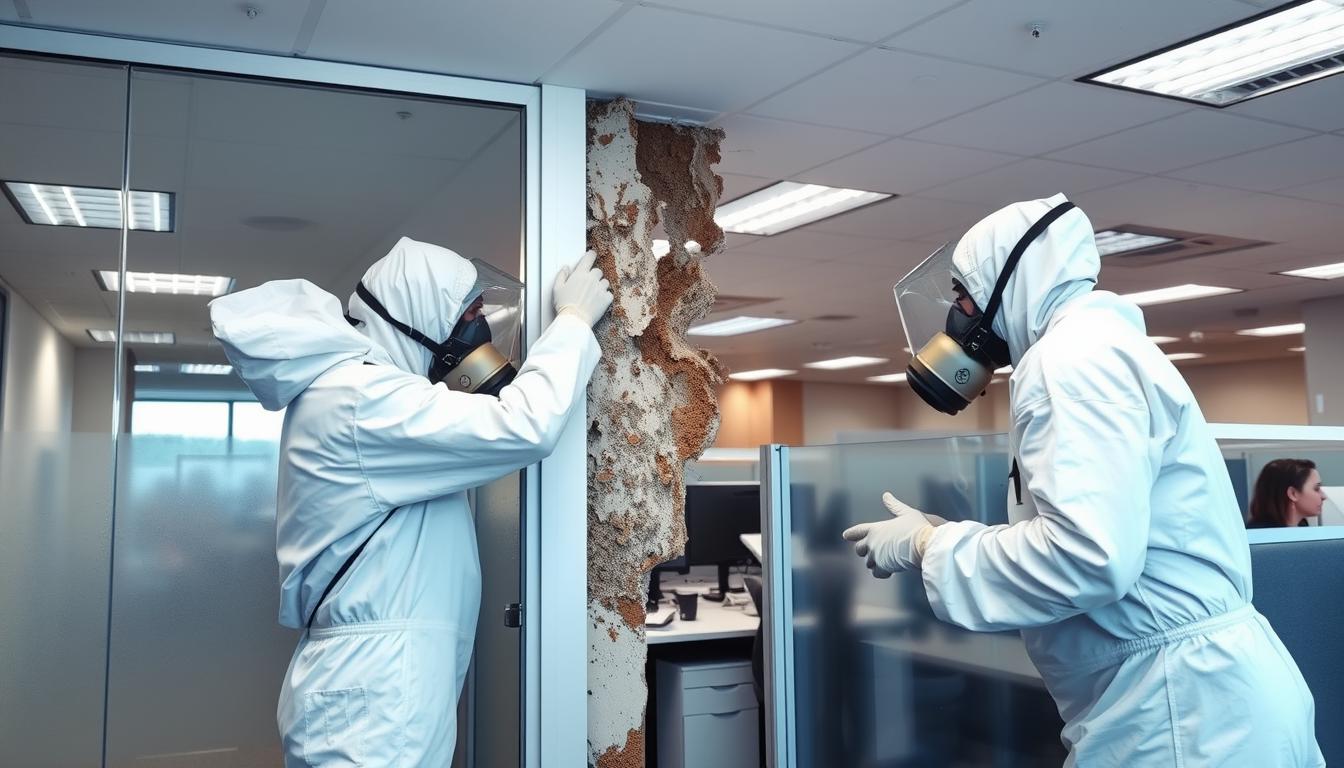Discovering mold in your office space can be alarming, but addressing it doesn’t have to halt your business operations. Professional office mold remediation with minimal disruption is possible with the right approach. This comprehensive guide outlines OSHA-approved methods to effectively eliminate mold while keeping your workplace functioning and your employees safe.
Professional remediation with proper containment allows business operations to continue safely
Understanding Mold in Office Environments
Mold thrives in office buildings due to several factors unique to commercial spaces. HVAC systems, water leaks, poor ventilation, and high humidity can all contribute to mold growth. According to OSHA guidelines, mold can begin growing within 24-48 hours of water intrusion, making prompt action essential.
Common Office Mold Sources
- Leaking roofs or windows
- Plumbing failures
- HVAC system condensation
- Poor building maintenance
- Water-damaged building materials
- Inadequate ventilation in break rooms
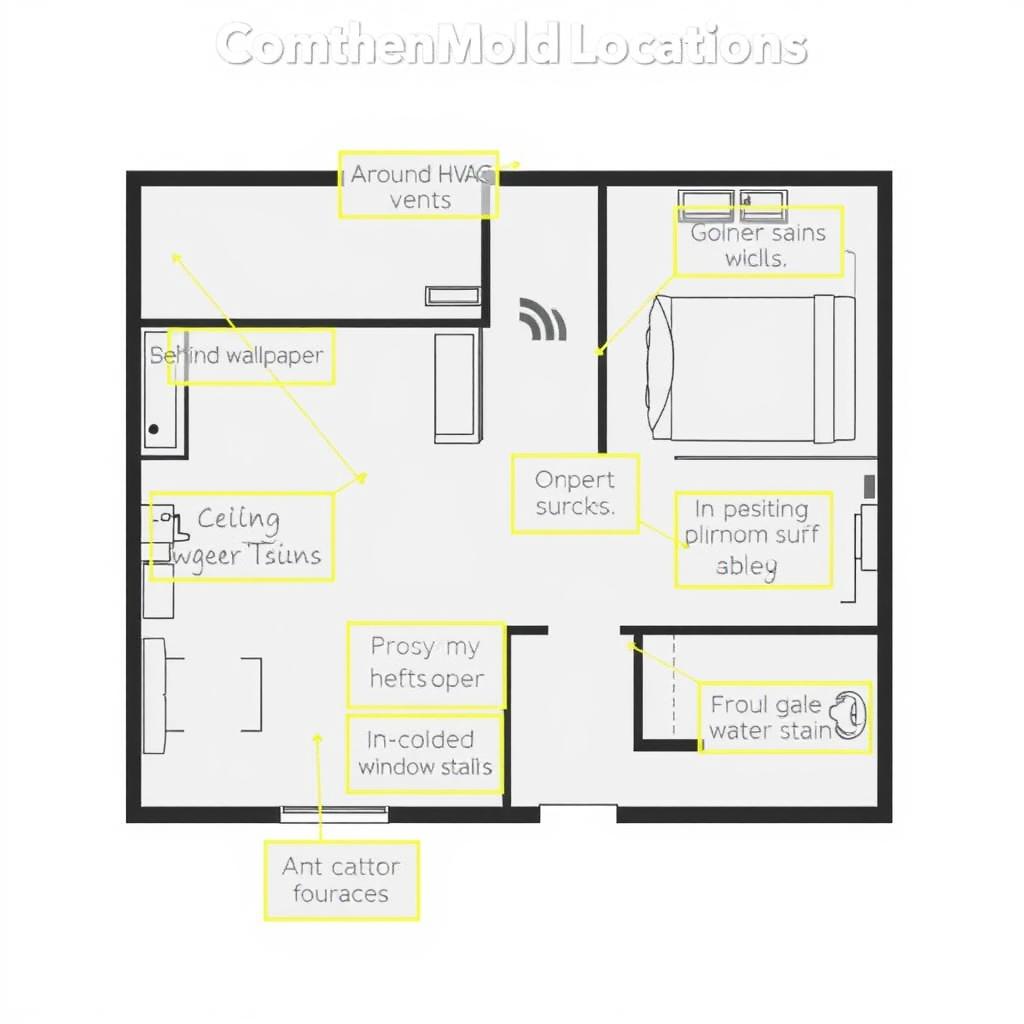
Important: OSHA notes that there are no federal standards for airborne mold concentrations, but visible mold growth should always be addressed promptly to prevent health issues and structural damage.
Identifying Mold in Office Spaces
Before remediation can begin, proper identification of mold is essential. While some mold is visible, it often grows in hidden areas, making thorough inspection crucial for effective office mold remediation with minimal disruption.
Visual Signs
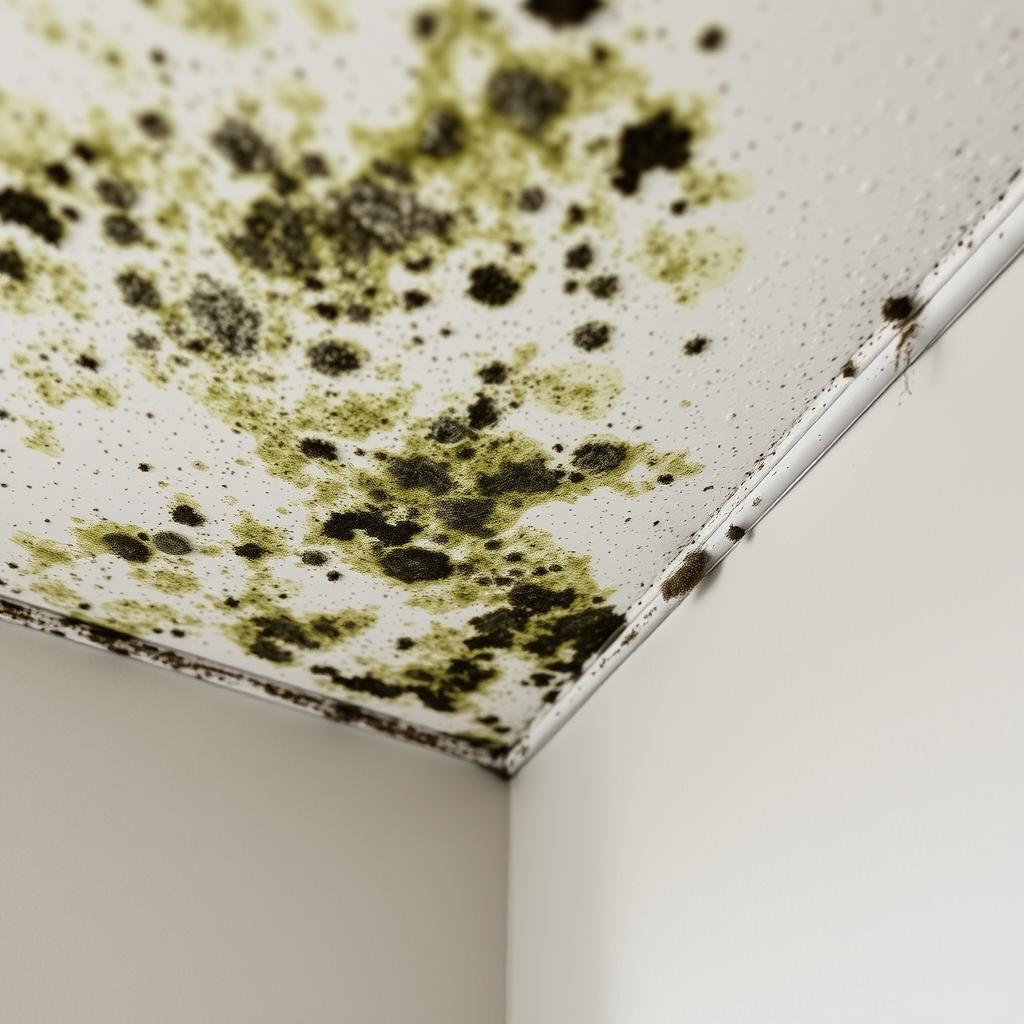
Discoloration on walls, ceilings, or around windows; fuzzy or slimy patches; peeling paint or wallpaper.
Odor Indicators
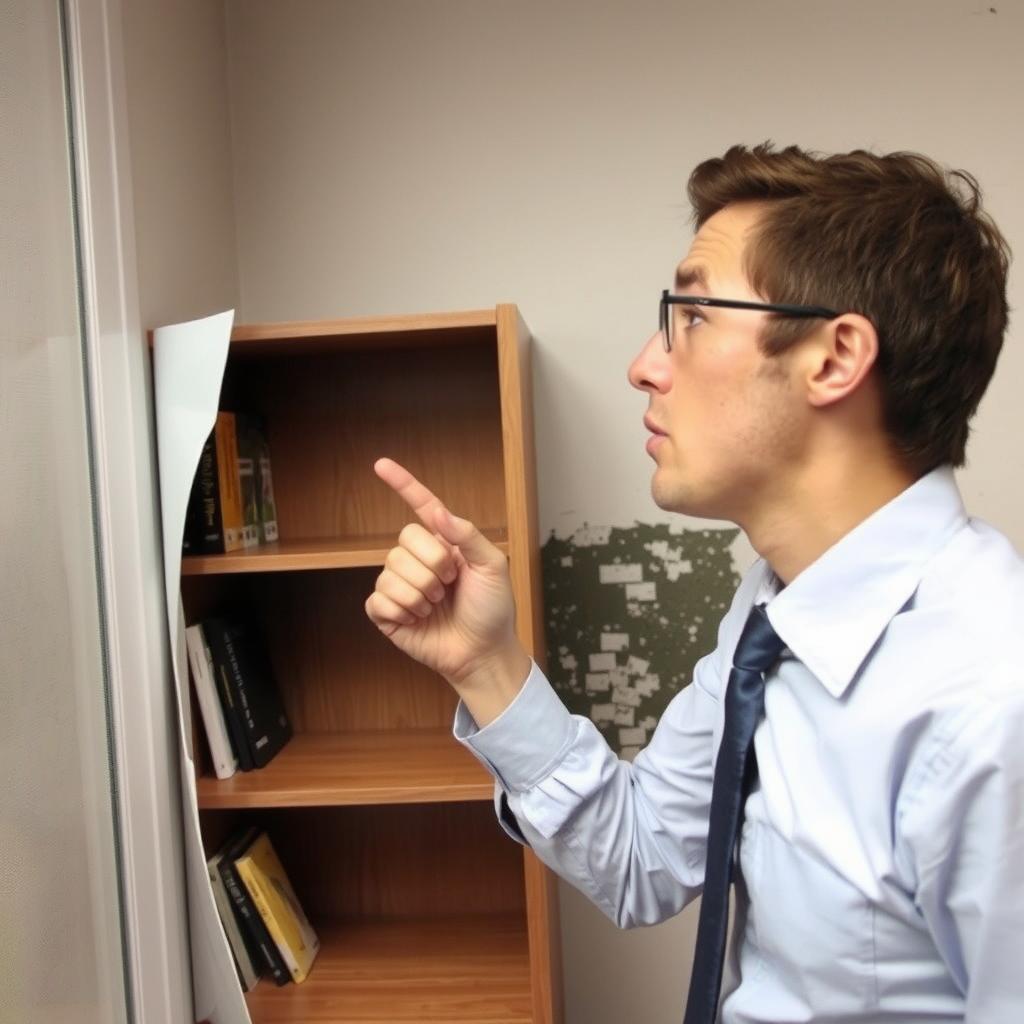
Persistent musty or earthy smell; complaints from employees about strange odors that intensify in certain areas.
Health Symptoms

Increased allergic reactions; respiratory issues; eye, nose, or throat irritation; headaches that improve away from the office.
Concerned About Hidden Mold in Your Office?
Professional inspection can identify mold problems before they spread, even in hidden areas.
Preparation for Minimal-Disruption Remediation
Proper planning is the key to office mold remediation with minimal disruption. Following OSHA guidelines, the remediation process should begin with a comprehensive plan that addresses containment, scheduling, and communication.
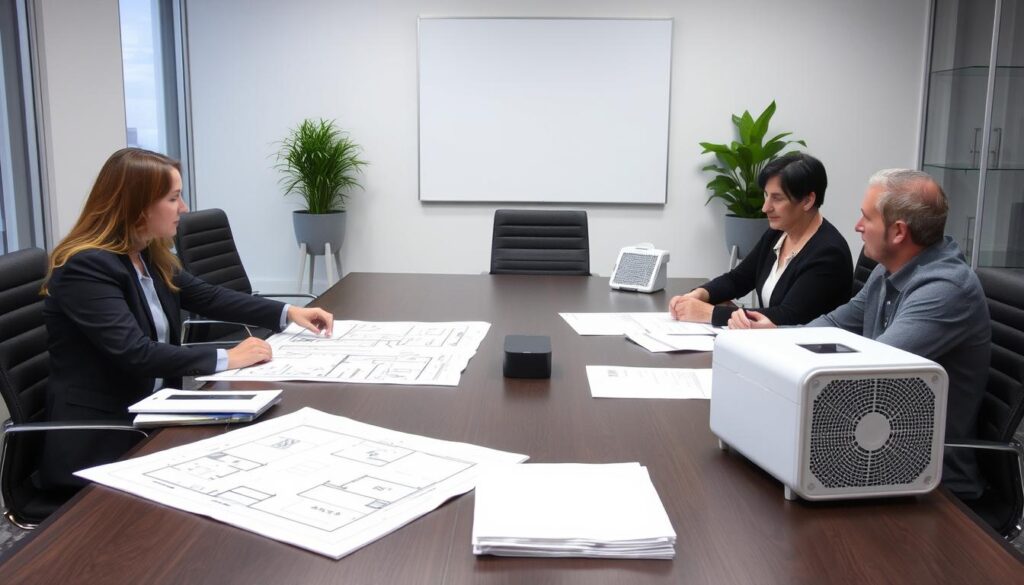
Thorough planning ensures minimal business disruption during remediation
Essential Preparation Steps
Assessment and Planning
- Determine the extent of mold contamination
- Identify the moisture source and correct it
- Develop a remediation plan based on contamination level
- Create a timeline that minimizes business interruption
- Prepare necessary equipment and materials
Communication Strategy
- Inform all employees about the remediation process
- Address health concerns and safety measures
- Provide a clear timeline of activities
- Designate alternative work areas if needed
- Establish points of contact for questions
“The remediation manager’s highest priority must be to protect the health and safety of building occupants and remediators while minimizing disruption to normal operations.”
Containment Strategies for Minimal Business Disruption
Effective containment is crucial for office mold remediation with minimal disruption. It prevents cross-contamination and allows unaffected areas to remain operational during the remediation process.
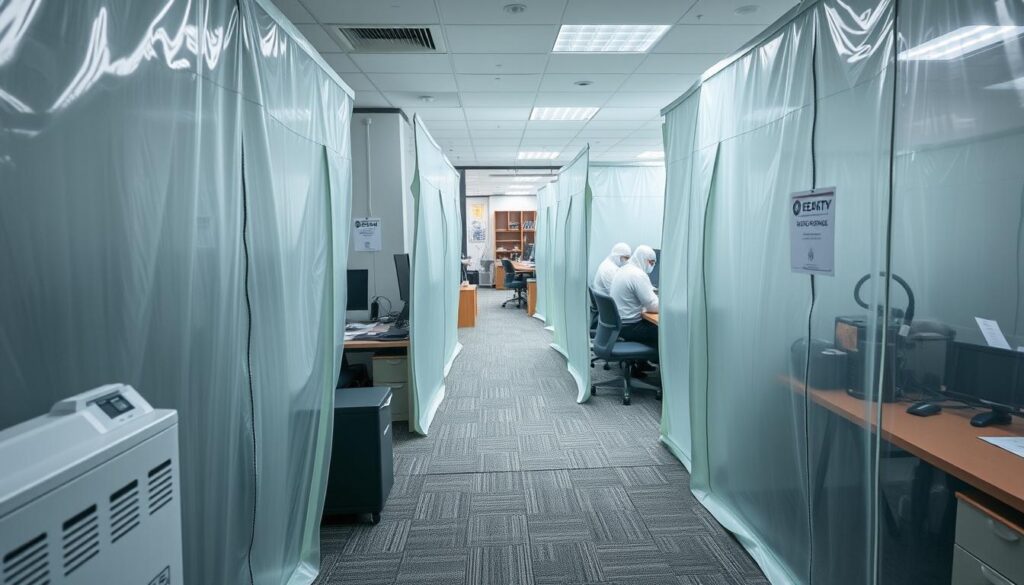
Professional containment allows work to continue in adjacent areas
OSHA-Recommended Containment Levels
| Contamination Level | Area Size | Containment Type | Business Impact |
| Level I: Small Isolated Areas | 10 sq. ft. or less | Minimal – Dust suppression methods | Minimal disruption, area unoccupied during work |
| Level II: Mid-Sized Areas | 10-30 sq. ft. | Limited – Plastic sheeting for affected surfaces | Localized disruption, adjacent areas can function |
| Level III: Large Areas | 30-100 sq. ft. | Full – Sealed plastic barriers, HVAC isolation | Moderate disruption, adjacent areas may need temporary relocation |
| Level IV: Extensive | Greater than 100 sq. ft. | Complete – Negative pressure, airlocks, decontamination rooms | Significant disruption, phased approach recommended |
Advanced Containment Techniques
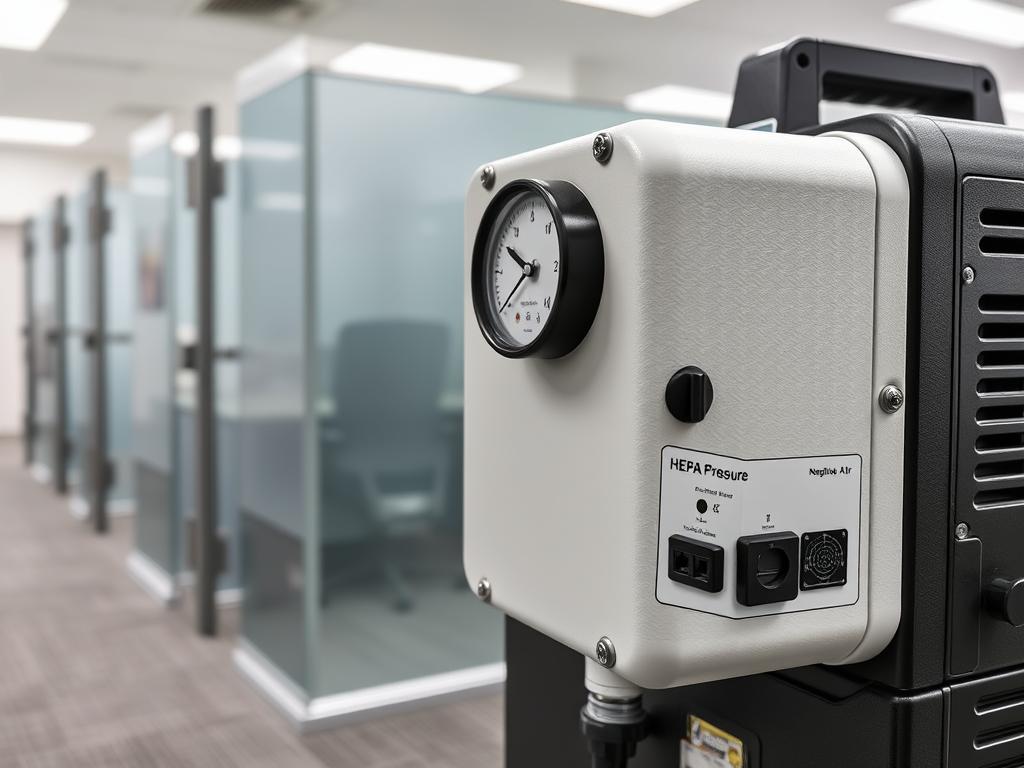
- Negative Air Pressure – Uses HEPA-filtered machines to create negative pressure, preventing spores from escaping
- Airlocks and Decontamination Chambers – Allow workers to enter/exit without spreading contaminants
- After-Hours Work – Scheduling noisy or disruptive activities outside business hours
- Phased Remediation – Addressing one section at a time to keep other areas operational
The Office Mold Remediation Process
Following OSHA guidelines, professional office mold remediation with minimal disruption involves several key steps. This systematic approach ensures thorough mold removal while maintaining workplace safety and minimizing operational impact.
1. Moisture Control
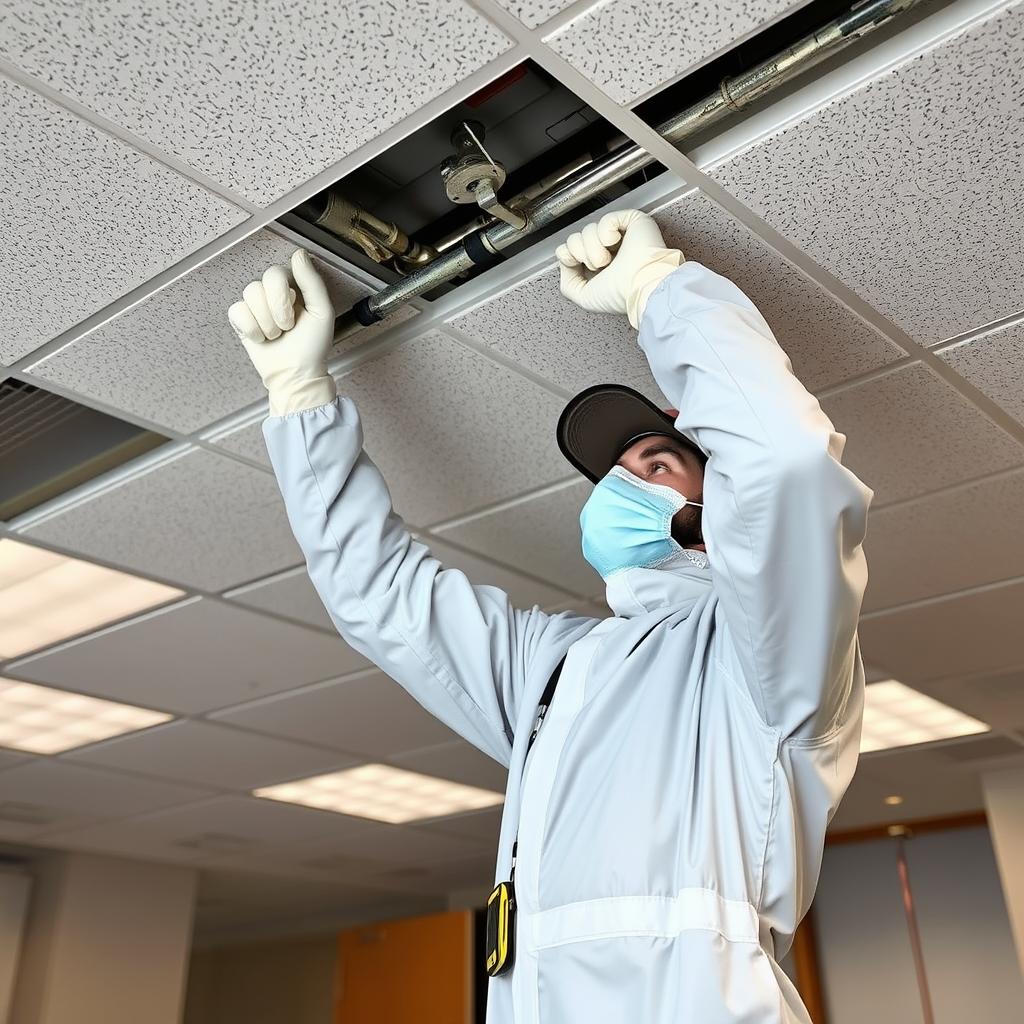
Identify and fix the moisture source before beginning remediation. This might involve repairing leaks, improving ventilation, or addressing humidity issues.
2. Isolation and Containment
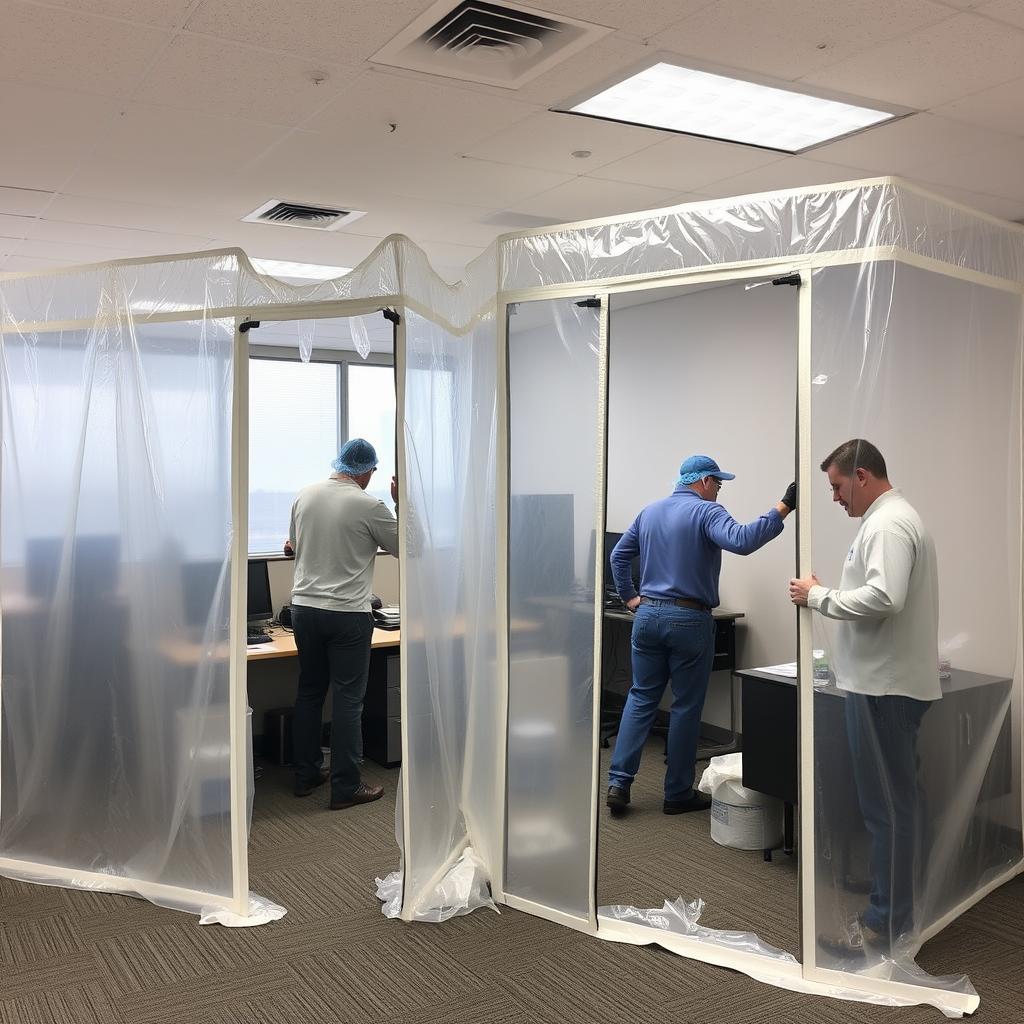
Establish containment barriers appropriate to the contamination level. Seal HVAC vents in the work area to prevent cross-contamination.
3. Air Filtration
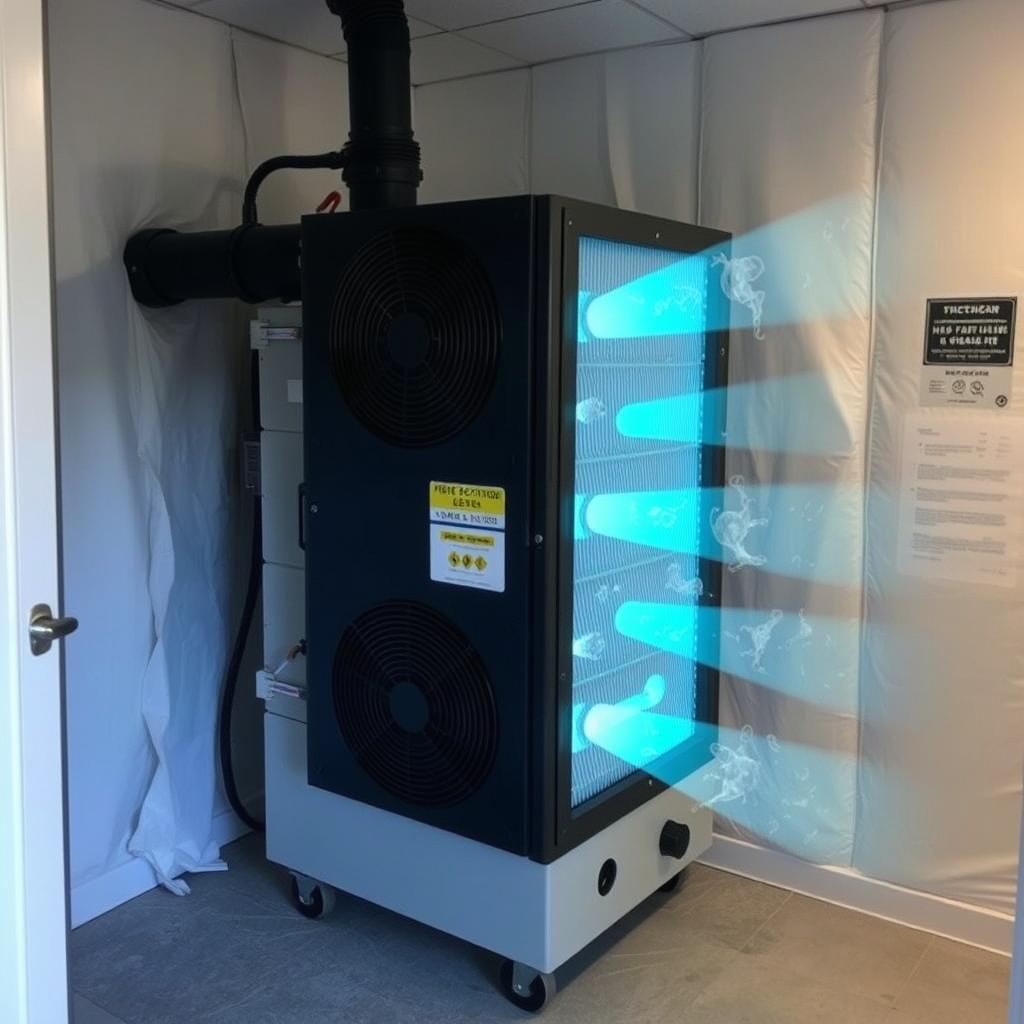
Deploy HEPA air scrubbers to capture airborne mold spores and improve air quality during and after remediation.
4. Removal of Contaminated Materials
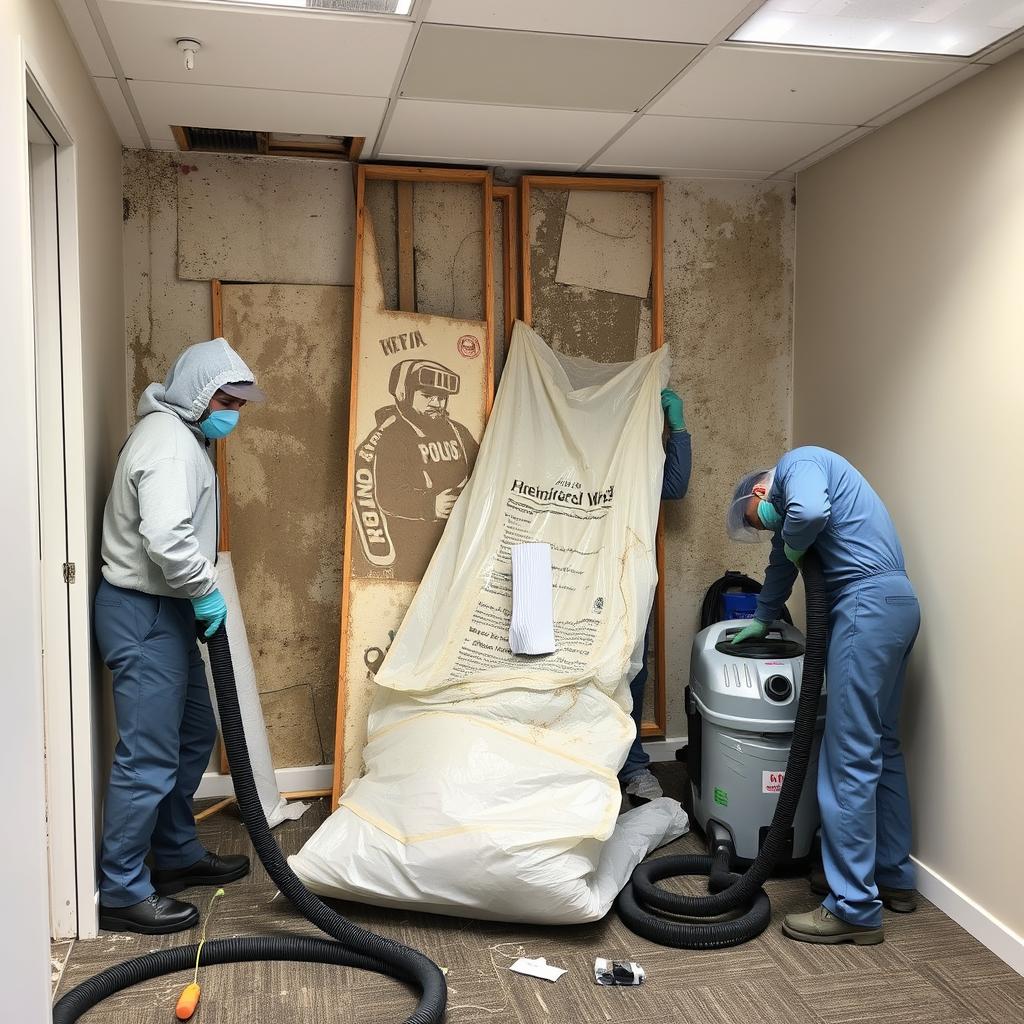
Carefully remove and dispose of materials that cannot be cleaned. Use proper containment procedures to prevent spreading spores.
5. Cleaning and Disinfection
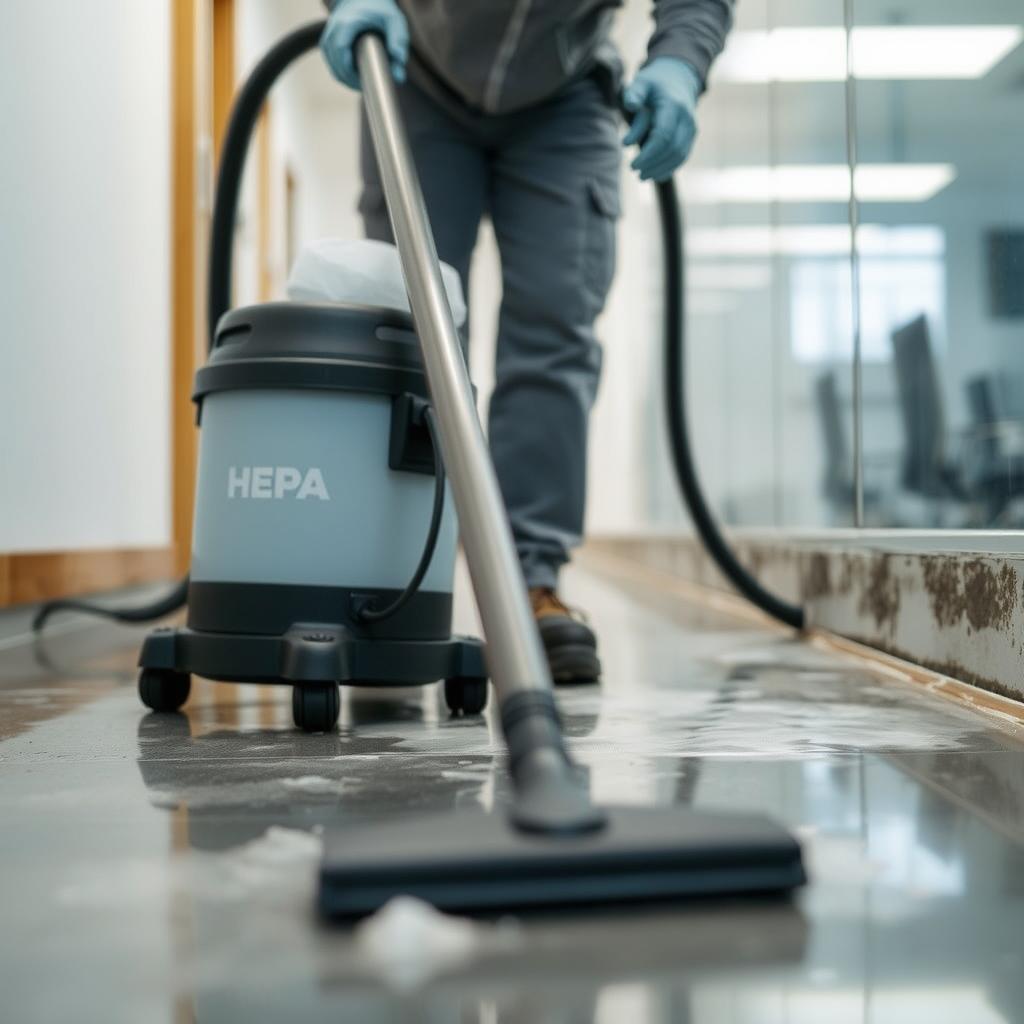
Clean all surfaces with appropriate detergents and antimicrobial treatments. HEPA vacuum all areas to remove residual spores.
6. Drying and Restoration
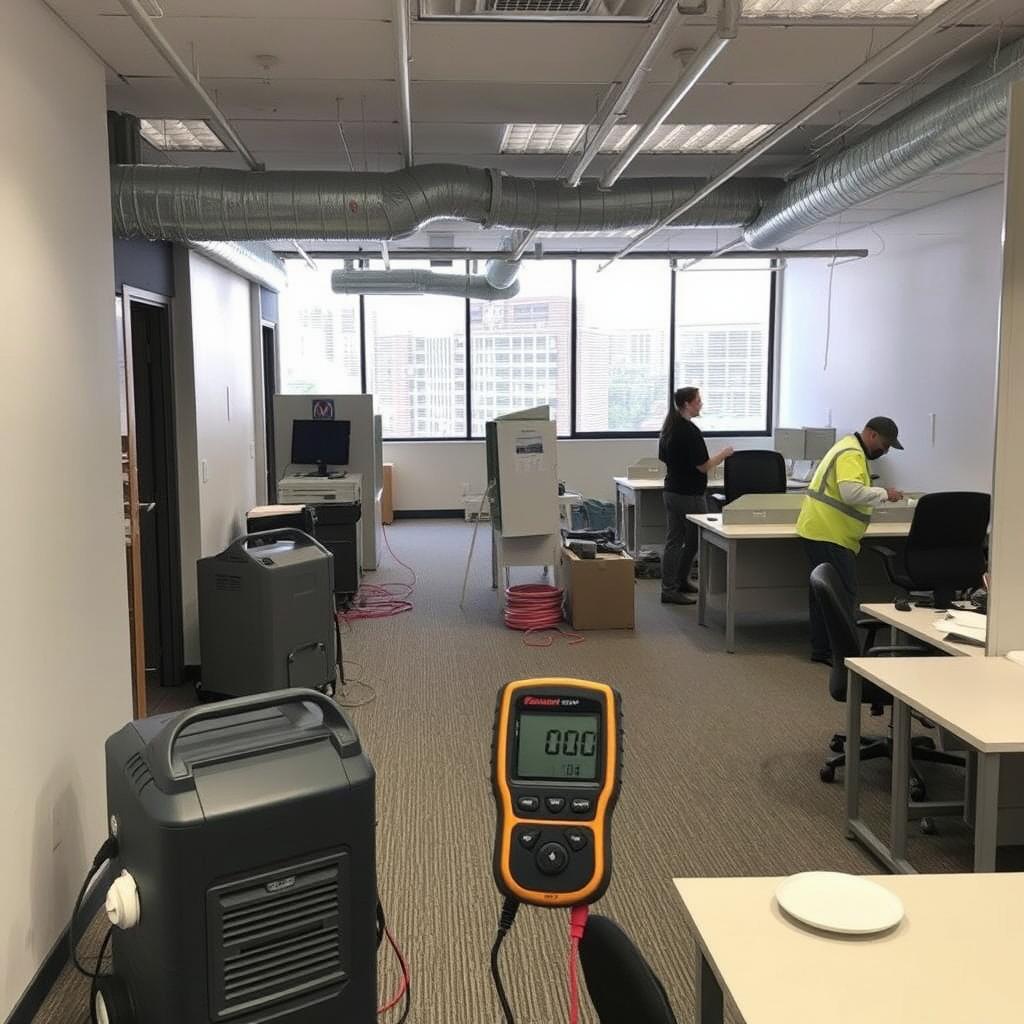
Thoroughly dry the area and restore with new materials as needed. Verify moisture levels are appropriate before finishing.
Strategies to Minimize Workplace Disruption
Effective office mold remediation with minimal disruption requires careful planning and coordination. These strategies help maintain business continuity while ensuring thorough remediation.
Scheduling Considerations
- After-Hours Work – Schedule noisy or highly disruptive activities outside business hours
- Weekend Remediation – Use weekends for major containment setup and removal
- Phased Approach – Divide large projects into manageable sections
- Coordinated Timing – Align with planned company events or holidays
Operational Adaptations
- Temporary Workspaces – Establish alternative work areas for displaced employees
- Remote Work Options – Enable work-from-home during critical remediation phases
- Clear Communication – Keep all stakeholders informed about timeline and expectations
- Essential Services Maintenance – Ensure critical business functions remain operational
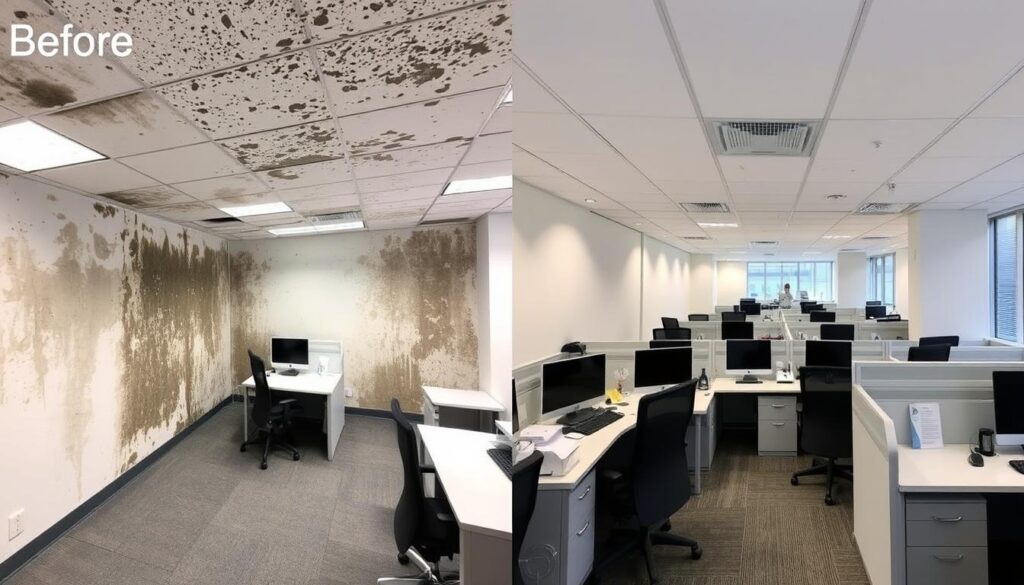
Professional remediation restores office spaces while minimizing business interruption
“When deciding if relocating occupants is necessary, consideration should be given to the size and type of mold growth, the type and extent of health effects reported by the occupants, the potential health risks associated with the remediation activity, and the amount of disruption this activity is likely to cause.”
Safety Considerations During Office Remediation
Protecting both remediation workers and office occupants is paramount during the mold removal process. OSHA provides specific guidelines for personal protective equipment (PPE) and safety protocols based on contamination levels.
Worker Protection
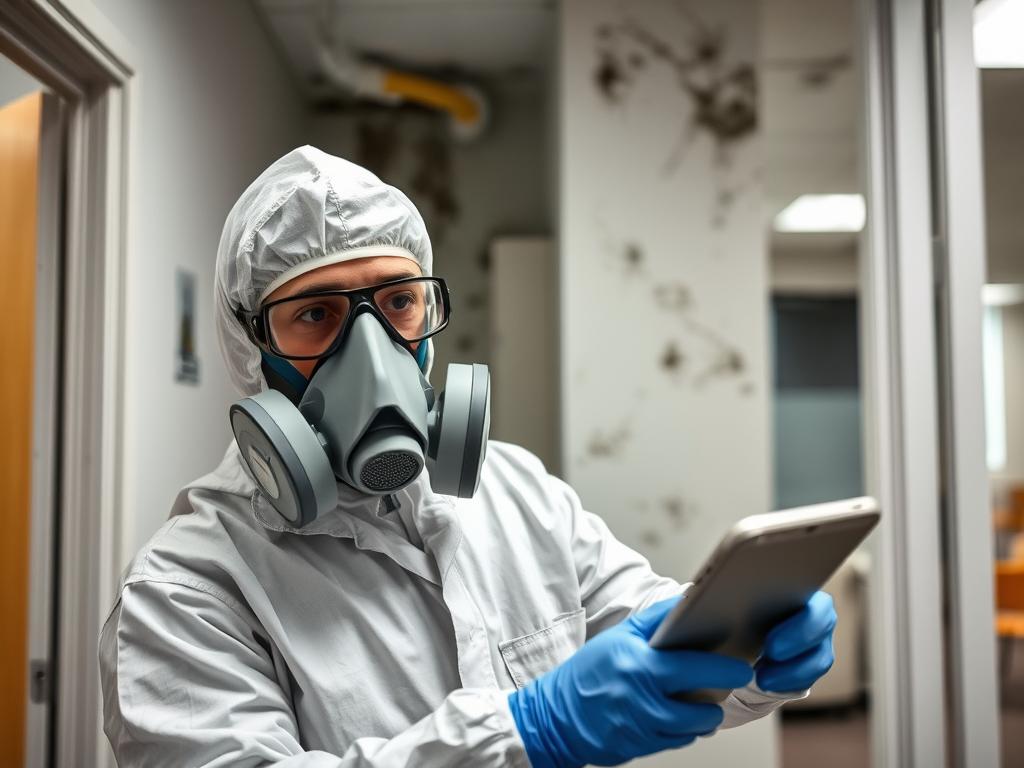
- Respiratory protection (N-95 to full-face respirators)
- Gloves and eye protection
- Disposable coveralls for extensive contamination
- Proper training on PPE use and remediation techniques
Occupant Safety
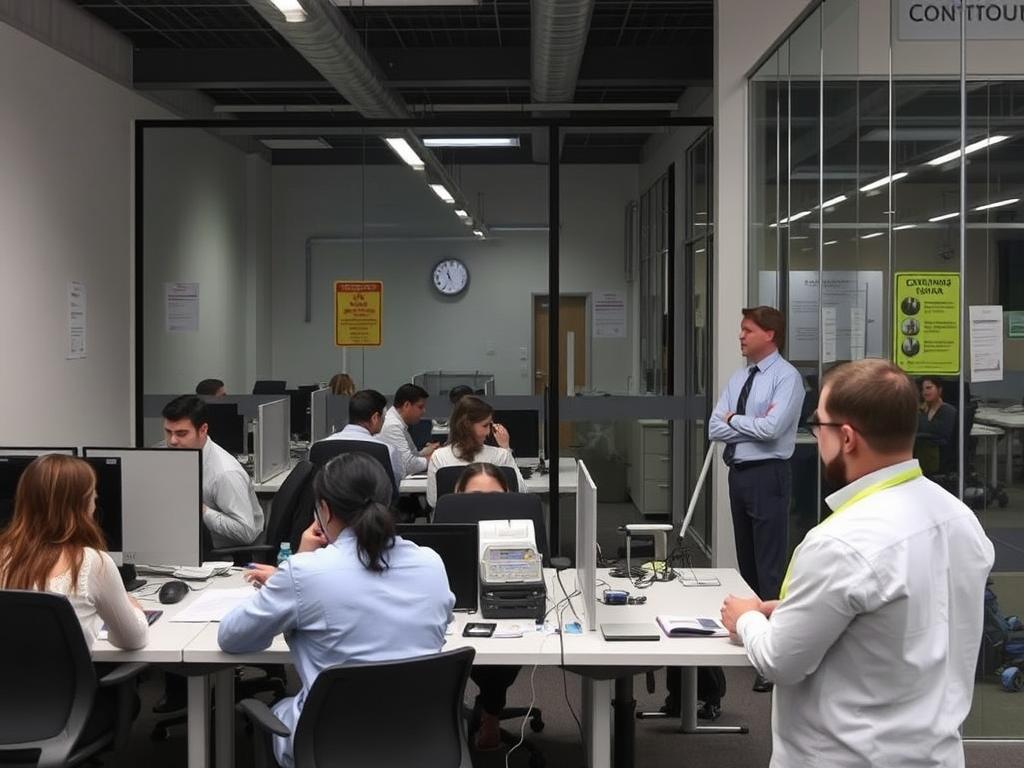
- Proper containment to prevent exposure
- Air quality monitoring in adjacent areas
- Clear communication about restricted zones
- Special considerations for sensitive individuals
Important Safety Note: According to OSHA, individuals with asthma, allergies, or compromised immune systems may need additional accommodations during remediation. Consider temporary relocation for these employees even with proper containment.
Preventing Future Mold Growth in Offices
After successful office mold remediation with minimal disruption, implementing preventive measures is essential to avoid recurrence. These strategies help maintain a mold-free workplace environment.
Moisture Control
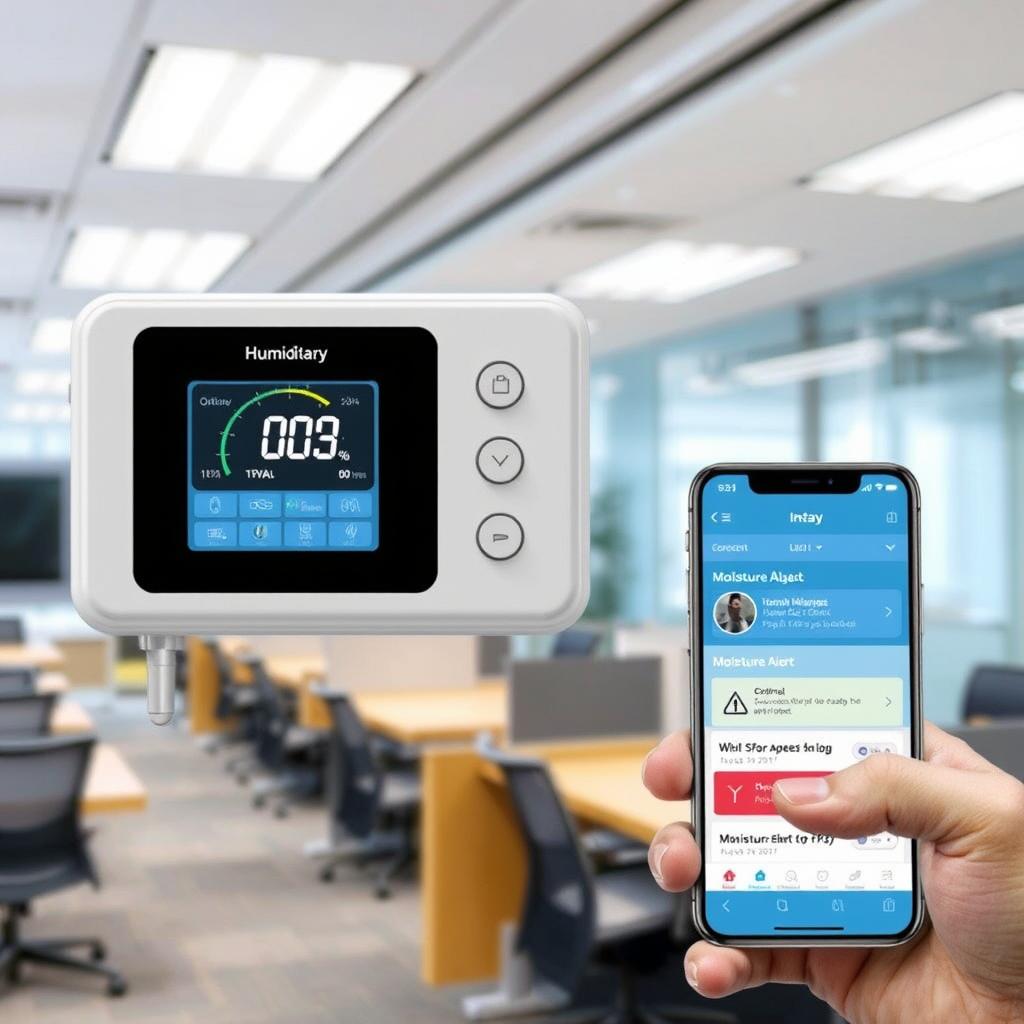
- Maintain indoor humidity between 30-60%
- Install humidity monitors in problem areas
- Address leaks within 24-48 hours
- Ensure proper drainage around the building
HVAC Maintenance
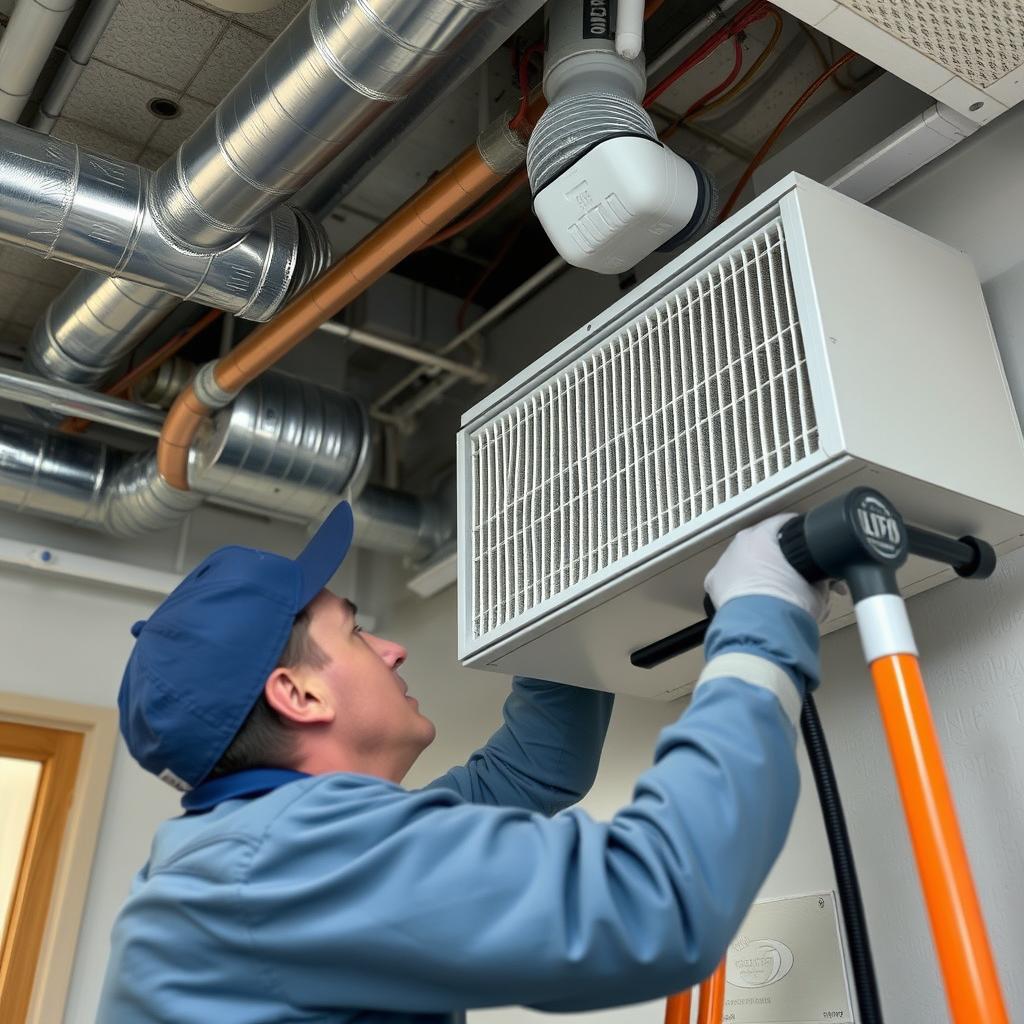
- Regular inspection and cleaning of HVAC systems
- Use MERV 8 or higher rated filters
- Keep HVAC drip pans clean and flowing
- Schedule professional duct cleaning
Building Maintenance
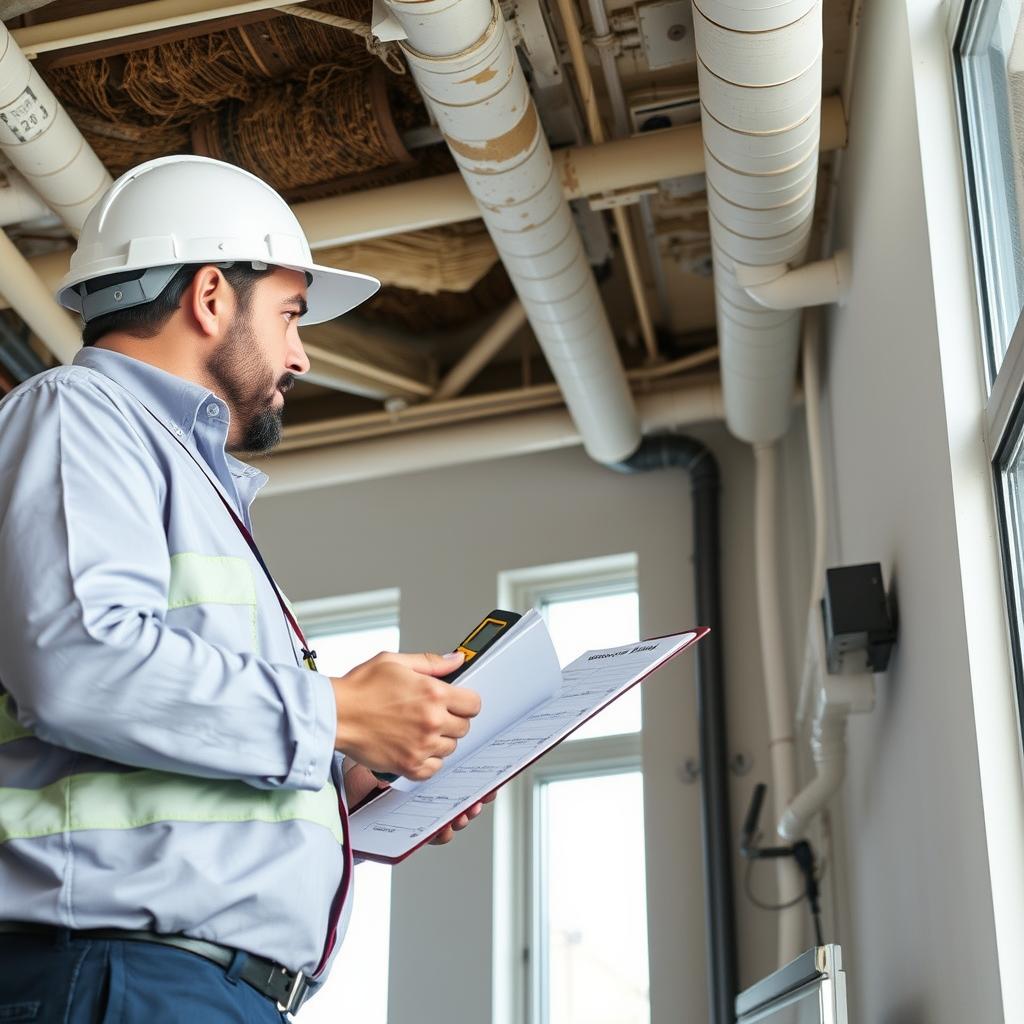
- Regular building envelope inspections
- Prompt repair of water damage
- Proper ventilation in bathrooms and break rooms
- Water-resistant materials in prone areas
Protect Your Office from Future Mold Problems
Our preventive maintenance programs help keep your workplace mold-free with regular inspections and early intervention.
Frequently Asked Questions
How long does office mold remediation typically take?
The duration depends on the extent of contamination and the size of the affected area. Small remediation projects (Level I) may take 1-2 days, while extensive remediation (Level IV) can take 1-2 weeks or longer. With proper planning and containment, most office spaces can remain partially operational during remediation, minimizing business disruption.
Can employees remain in the office during mold remediation?
According to OSHA guidelines, whether employees can remain in the building depends on the contamination level and containment measures. For small isolated areas (Level I and II), removing people from adjacent spaces is not necessary for most individuals. However, those with respiratory conditions, recent surgery, or compromised immune systems should be relocated. For larger contamination (Level III and IV), a professional assessment is needed to determine safe occupancy of adjacent areas.
Is testing necessary before and after office mold remediation?
OSHA states that if visible mold is present, testing is generally unnecessary before remediation. However, post-remediation verification may be valuable, especially in cases of extensive contamination or when addressing health concerns. This typically involves visual inspection, moisture measurements, and sometimes air sampling to confirm that mold levels are similar to outdoor air. Professional industrial hygienists can provide third-party clearance testing for added assurance.
Conclusion: Balancing Remediation and Business Continuity
Effective office mold remediation with minimal disruption requires a careful balance between thorough removal and maintaining business operations. By following OSHA guidelines and implementing proper containment strategies, professional remediation can address mold issues while allowing your business to continue functioning.
Remember that the key to successful remediation is addressing both the mold and its underlying moisture source. With proper planning, communication, and execution, your office can be restored to a healthy environment without extended downtime or significant operational impacts.
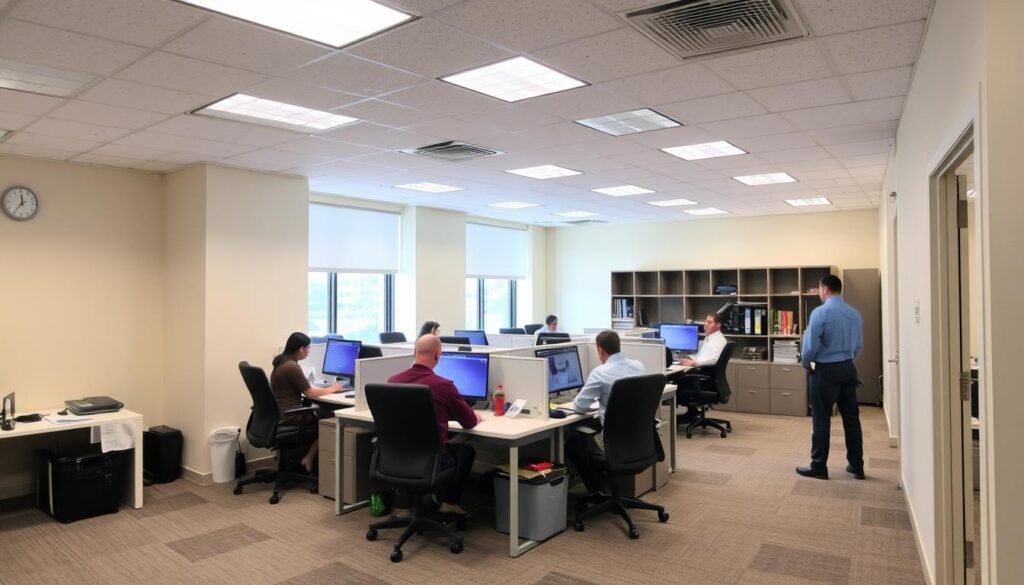
Professional remediation restores healthy work environments while maintaining business continuity
